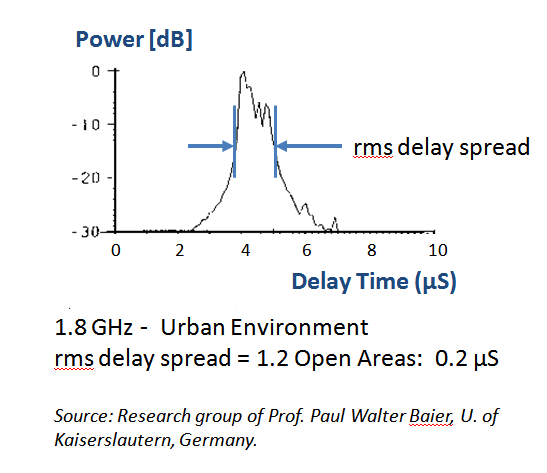This is because intersymbol interference is caused by dispersion in the channel (assuming properly designed pulse shaping filters such that there is no "native" ISI in the waveform itself). This dispersion can be caused by analog filtering or over the air multi-path as illustrated in my graphic below:

For the case of multi-path, the multiple transmission paths result in a "delay spread". According the the reference in the next graphic, for the macrocellular systems the typical delay spreads are:
Open areas: 0.2 uS
Suburban: 0.5 uS
Urban: 3 uS

When the symbol duration is significantly longer than the delay spread, there is minimum interference from one symbol to the next, but if the symbol duration approaches the delay spread, the interference will be significant! For a multipath case resulting from multiple replicas of the same waveform arriving at different times, this can be corrected with equalization. For the case of OFDM, we are actually converting the waveform into independent channels of significantly longer duration, thus solving this issue. The cyclic prefix allows a guard interval to eliminate the intersymbol interference from a previous OFDM symbol. To achieve this, the cyclic prefix must be at least as long as the delay spread of the channel.
For further details into the properties of the cyclic prefix such as converting linear convolution to circular convolution in the FFT frame for maintaining sub-carrier orthogonality, please see the good answers at this post.


